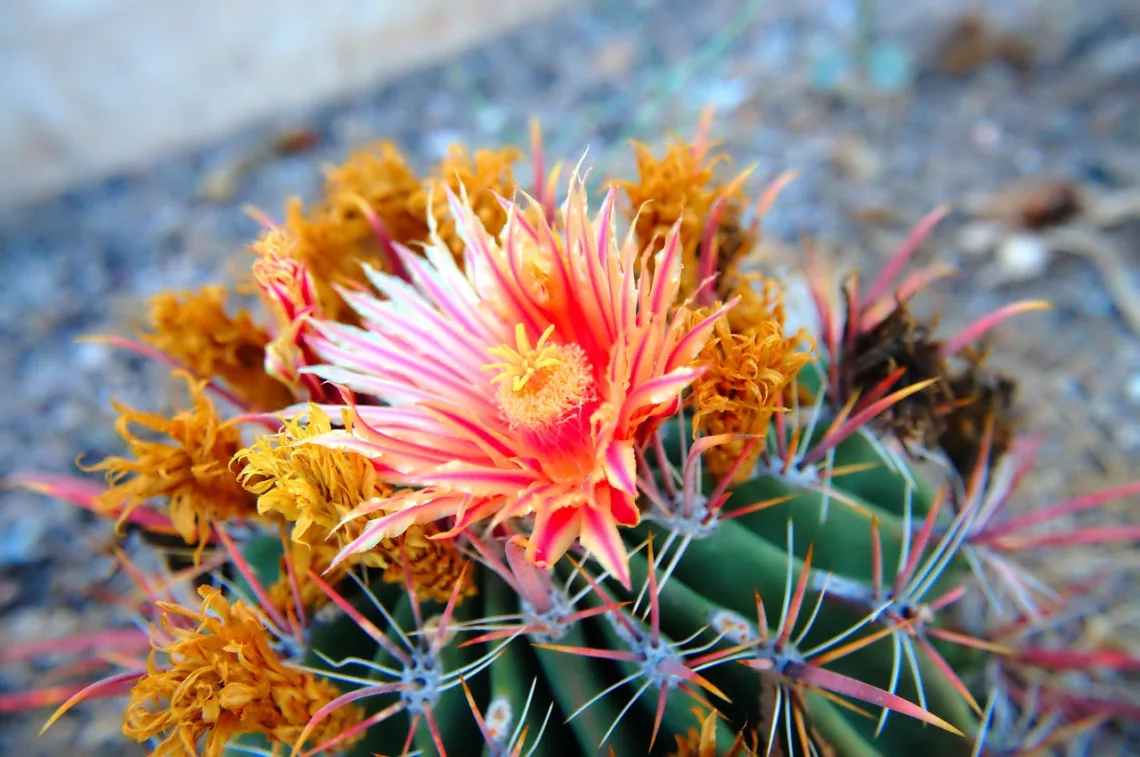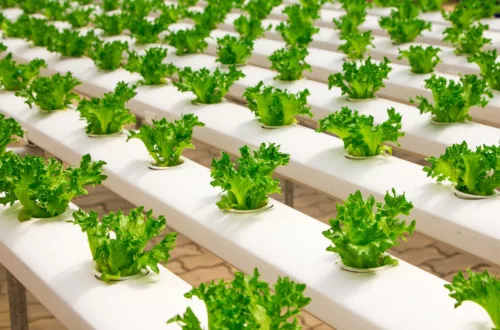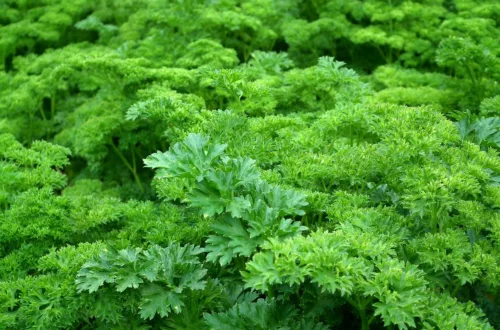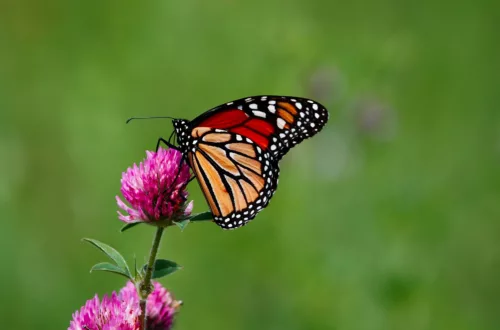When it comes to gardening in Arizona, it can be challenging to find the right herbs to grow. With the dry, hot climate, not all herbs can thrive in this environment. However, with the right knowledge and preparation, growing herbs in Arizona can be a rewarding experience. In this article, we will share with you the best herbs to grow in Arizona and some tips on how to care for them.
Disclaimer: This article is provided for informational purposes only and should not replace professional medical advice. Please consult with a qualified healthcare practitioner or herbalist before using any herbal remedies.
First on our list is rosemary, a woody perennial herb that is well-suited for Arizona’s climate. It is drought-tolerant and can grow in full sun, making it an excellent choice for gardens with limited shade. Rosemary is also a versatile herb that can be used in a variety of dishes, from roasted meats to baked goods.
Another herb that can thrive in Arizona is thyme. This herb is easy to grow and can be used in many dishes, including soups, stews, and marinades. Thyme prefers well-drained soil and full sun, making it an ideal herb for Arizona gardens. With its fragrant leaves and delicate flowers, thyme is a beautiful addition to any garden.
Selecting the Right Herbs for Arizona
If you are planning to start an herb garden in Arizona, you need to choose the right herbs that can thrive in the desert climate. In this section, we will discuss some important factors to consider when selecting the best herbs to grow in Arizona.
Understanding Arizona’s Climate
Arizona has a hot and arid climate with long, hot summers and mild winters. The state is divided into three main biomes: the Sonoran Desert, the Mojave Desert, and the Colorado Plateau. Each biome has its own unique climate and soil conditions that affect the growth and survival of plants.
When selecting herbs for your Arizona garden, it’s important to choose plants that are adapted to the desert climate. Look for herbs that can tolerate high temperatures, low humidity, and drought conditions. Some herbs that are well-suited for Arizona’s climate include rosemary, thyme, oregano, and sage.
Perennial vs. Annual Herbs
Another factor to consider when selecting herbs for your Arizona garden is whether to choose perennial or annual herbs. Perennial herbs are plants that live for more than two years, while annual herbs complete their life cycle in one growing season.
Perennial herbs are a good choice for Arizona gardens because they are more drought-tolerant and require less maintenance than annual herbs. Some popular perennial herbs that can grow well in Arizona include mint, lavender, chives, and lemon balm.
Annual herbs, on the other hand, can provide a quick burst of flavor to your dishes and can be grown from seeds each year. Some popular annual herbs that can thrive in Arizona’s climate include basil, cilantro, and parsley.
Popular Varieties of Herbs- Best Herbs to Grow in Arizona
Here are some of the best herbs to grow in Arizona:
- Rosemary: This perennial herb is a hardy plant that can tolerate hot, dry conditions. It has a strong, woody flavor that is perfect for seasoning meats and vegetables.
- Basil: This annual herb is easy to grow and can add a burst of flavor to your dishes. It comes in many varieties, including sweet basil, Thai basil, and lemon basil.
- Oregano: This perennial herb is a staple in Mediterranean cuisine and can add a savory flavor to your dishes. It is drought-tolerant and can grow well in Arizona’s climate.
- Thyme: This perennial herb has a fragrant aroma and can add a savory flavor to your dishes. It is a hardy plant that can tolerate hot, dry conditions.
- Sage: This perennial herb has a strong, earthy flavor that is perfect for seasoning meats and vegetables. It is a drought-tolerant plant that can grow well in Arizona’s climate.
In conclusion, selecting the right herbs for your Arizona garden requires careful consideration of the climate, soil conditions, and the type of herbs you want to grow. By choosing herbs that are well-suited for the desert climate, you can create a beautiful and productive herb garden that can provide fresh herbs for your cooking all year round.
Soil Preparation and Garden Beds- Best Herbs to Grow in Arizona
Enhancing Native Soil
When it comes to gardening, soil is one of the most important factors to consider. Arizona soil can be quite challenging due to its sandy nature. However, we can enhance the native soil by adding organic matter to it. Organic matter can be added in the form of compost, manure, or leaf mold. This will help to increase the water-holding capacity of the soil and provide nutrients to the plants.
Another way to enhance the native soil is by adding mulch. Mulch helps to retain moisture in the soil and prevent it from drying out. It also helps to suppress weeds and regulate soil temperature. We can use organic materials such as straw, leaves, or wood chips as mulch.
Choosing Soil for Container Gardens
If you plan on growing herbs in containers, it’s important to choose the right soil. Container gardens require a different type of soil than garden beds. We recommend using a high-quality potting mix that is specifically designed for container gardens. This type of soil is lightweight and well-draining, which is essential for container gardening.
When choosing soil for container gardens, it’s important to look for a mix that contains organic matter. Organic matter helps to retain moisture in the soil and provide nutrients to the plants. We also recommend adding perlite or vermiculite to the soil mix. These materials help to improve drainage and prevent soil compaction.
In summary, whether you are gardening in garden beds or container gardens, soil preparation is key to growing healthy herbs. Enhancing the native soil with organic matter and choosing the right soil for container gardens are both important steps to take. By following these tips, we can create a rich soil environment that will help our herbs thrive.
Planting and Caring for Your Herbs- Best Herbs to Grow in Arizona
Growing herbs in Arizona can be a rewarding experience, but it requires some knowledge and attention to detail. In this section, we will cover the best time to plant, watering requirements, and managing sunlight and shade for your herbs.
Best Time to Plant
The best time to plant herbs in Arizona is during the cooler months of the year, from October to February. During this time, the morning sun is not as intense as in the summer months, and the soil is moist and well-drained. Herbs should be planted in a location that receives morning sun and afternoon shade, as this will protect them from the intense heat of the afternoon sun.
Watering Requirements
Herbs require much water to grow properly, especially during the hot summer months. It is important to keep the soil moist, but not waterlogged. Water your herbs deeply once a week, and ensure that the soil is well-drained. If the soil is too wet, the roots can rot, and the herbs will not grow properly.
Managing Sunlight and Shade
Herbs require different levels of sunlight and shade depending on the species. Some herbs, such as basil and parsley, require full sunlight to grow properly. Other herbs, such as mint and chives, prefer light shade or partial shade. It is important to research the sunlight requirements of each herb before planting to ensure that they receive the proper amount of sunlight.
In conclusion, growing herbs in Arizona can be a fun and rewarding experience, but it requires some knowledge and attention to detail. By planting your herbs during the cooler months, watering them properly, and managing their sunlight and shade requirements, you can ensure that your herbs thrive in the Arizona climate.
Maintaining Healthy Herb Plants- Best Herbs to Grow in Arizona
Growing herbs in Arizona can be a challenging task, but with proper care, you can have a thriving herb garden. In this section, we will discuss two essential aspects of maintaining healthy herb plants: fertilizing and pruning, and pest and disease management.
Fertilizing and Pruning
To keep your herb plants healthy, you need to fertilize them regularly. We recommend using organic fertilizers, such as compost or manure, which provide essential nutrients to the soil. You can also use commercial fertilizers, but make sure to follow the instructions carefully. Over-fertilizing can harm your plants.
Pruning is another critical aspect of maintaining healthy herb plants. Regular pruning promotes bushier growth and prevents the plants from becoming leggy. It also helps to remove dead or damaged leaves and stems, which can attract pests and diseases.
Pest and Disease Management
Pests and diseases can quickly spread in herb gardens, so it’s essential to keep an eye out for any signs of trouble. The most common pests in Arizona herb gardens are aphids, spider mites, and whiteflies. You can control these pests by using insecticidal soap or neem oil. For severe infestations, you may need to use chemical pesticides, but make sure to follow the instructions carefully.
Diseases can also affect herb plants, especially if they are grown in humid conditions. Powdery mildew and root rot are two common diseases that can affect herb plants. To prevent these diseases, make sure your plants have good drainage and are not overwatered. You can also use fungicides to control powdery mildew.
In conclusion, maintaining healthy herb plants requires regular fertilizing and pruning, as well as pest and disease management. By following these tips, you can have a thriving herb garden in Arizona.
Special Considerations for Arizona Herb Gardens- Best Herbs to Grow in Arizona
If you’re planning to grow herbs in Arizona, there are a few special considerations you should keep in mind. In this section, we’ll cover some tips for dealing with the high temperatures and choosing herbs that thrive in warmer climates.
Dealing with High Temperatures
Arizona is known for its hot summers, and this can be a challenge for gardeners. During the hottest part of the year, it’s important to take steps to protect your herbs from the intense summer heat. Here are a few tips:
- Provide shade: One of the best ways to protect your herbs from the sun is to provide them with some shade. You can use shade cloth or even plant taller herbs nearby to provide some natural shade.
- Water regularly: Herbs need plenty of water to thrive, especially during the warmer months. Be sure to water your herbs regularly, and consider using a drip irrigation system to make sure they get the right amount of water.
- Mulch: Adding a layer of mulch around your herbs can help to keep the soil moist and cool, which is especially important during the summer heat.
Choosing Herbs for Warmer Climates
When it comes to choosing herbs for your Arizona garden, it’s important to select herbs that are well-suited for warmer climates. Here are a few herbs that thrive in the Phoenix area and other warmer parts of the state:
- Basil: This popular herb is easy to grow and loves the heat. It’s a great addition to salads, pasta dishes, and more.
- Rosemary: Another herb that loves the heat, rosemary is a great choice for flavoring meats, potatoes, and other dishes.
- Thyme: This fragrant herb is a staple in many Mediterranean dishes and is well-suited for warmer climates.
- Oregano: Oregano is a hardy herb that can withstand the summer heat and is perfect for adding flavor to pizzas, pastas, and more.
By following these tips and choosing the right herbs, you can enjoy a thriving herb garden in Arizona’s warmer climates.
Harvesting and Using Your Herbs- Best Herbs to Grow in Arizona
Growing herbs in Arizona is a great way to add flavor to your dishes and enjoy the benefits of fresh, aromatic leaves. Once your herbs are ready to be harvested, it’s important to know the best way to do it to ensure the highest quality and flavor. In this section, we will discuss when and how to harvest your herbs, as well as the best ways to store and preserve them.
When and How to Harvest
The best time to harvest your herbs is in the morning, after the dew has evaporated but before the sun gets too hot. This is when the essential oils in the leaves are at their highest concentration, making for the best flavor and aroma. To harvest your herbs, simply cut off the stems with a sharp pair of scissors or pruning shears, leaving a few inches of stem on the plant. Be sure to only take a few stems from each plant at a time, so that the plant can continue to grow and produce more leaves.
Different herbs require different harvesting methods. For example, basil should be harvested by pinching off the leaves from the stem, while thyme and rosemary should be harvested by cutting off the entire stem. Be sure to do your research on the specific herbs you are growing to ensure the best results.
Storing and Preserving Herbs
Fresh herbs can be stored in the refrigerator for up to a week. To do this, wrap the stems in a damp paper towel and place them in a plastic bag. Alternatively, you can place the stems in a jar of water, like a bouquet of flowers, and cover the top with a plastic bag. This will keep the herbs fresh and hydrated for a few days.
Drying your herbs is a great way to preserve them for later use. To dry your herbs, simply tie them together in small bunches and hang them upside down in a warm, dry place. Once the leaves are dry and crumbly, remove them from the stems and store them in an airtight container. Dried leaves can be used in cooking, teas, and even as a natural remedy for various ailments.
In addition to culinary use, many herbs have medicinal properties. For example, chamomile can be used to soothe an upset stomach, while lavender can be used to promote relaxation and relieve stress. Be sure to research the medicinal properties of the herbs you are growing, and consult with a healthcare professional before using them for medicinal purposes.
Using fresh or dried herbs in salad dressings is a great way to add flavor and nutrition to your meals. Simply mix together your favorite herbs with olive oil, vinegar, and any other desired seasonings. This will create a delicious and healthy dressing that is sure to impress.
In conclusion, harvesting and using your herbs is a fun and rewarding experience that can add flavor, aroma, and nutrition to your meals. By following these simple tips, you can ensure that your herbs are of the highest quality and flavor, and that they last for months to come.
Designing Your Herb Garden- Best Herbs to Grow in Arizona
If you are planning to grow herbs in Arizona, you need to consider the unique climate and soil conditions of the region. In this section, we will provide some tips on designing your herb garden to ensure that you have a beautiful and functional space for growing herbs.
Creating Aesthetic and Functional Spaces
When designing your herb garden, it is important to consider both aesthetics and functionality. You want your garden to look beautiful, but you also want it to be practical and easy to use. Here are some tips for creating a functional yet beautiful herb garden:
- Use garden designs that are appropriate for the Arizona climate. For example, consider using raised beds or container gardens to help with drainage and to protect your plants from the intense heat.
- Choose smaller plants that are better suited to the Arizona climate. Some good options include basil, thyme, oregano, and parsley.
- Incorporate tall garden plants into your design to add height and interest. Some good options include rosemary, lavender, and sage.
- Consider incorporating your herb garden into your vegetable garden. This can help to maximize space and make your garden more functional.
Incorporating Herbs into Landscaping
Herbs can be a beautiful and functional addition to your landscaping. Here are some tips for incorporating herbs into your landscape design:
- Use herbs as borders or edging to add interest and fragrance to your garden.
- Plant herbs in containers and use them to add color and texture to your patio or deck.
- Consider using herbs as ground cover in areas where grass may not grow well.
- Use herbs to attract pollinators to your garden. Bees and butterflies love herbs like lavender, thyme, and basil.
By following these tips, you can create a beautiful and functional herb garden that is well-suited to the Arizona climate.
Local Resources and Further Learning- Best Herbs to Grow in Arizona
As we continue to explore the world of Arizona herb gardening, we want to share some local resources that can help us grow our knowledge and skills. Here are some great places to connect with like-minded gardeners and learn more about herb gardening in Arizona.
Arizona Gardening Communities- Best Herbs to Grow in Arizona
One of the best ways to learn about herb gardening in Arizona is to join a local gardening community. Groups like the Arizona Herb Association and the Green Thumb Garden Club offer a wealth of knowledge and experience, as well as opportunities to connect with other gardeners in the area. These groups often host workshops, plant swaps, and other events that can help us learn more about growing herbs in Arizona.
Educational Workshops and Events- Best Herbs to Grow in Arizona
Another great way to expand our knowledge of Arizona herb gardening is to attend educational workshops and events. Watters Garden Center in Prescott, for example, offers a range of workshops throughout the year, covering topics like herb gardening, container gardening, and more. Similarly, Ken Lain, owner of Watters Garden Center, hosts a weekly radio show called “Gardening with Ken” that covers a wide range of gardening topics, including herb gardening.
In addition to these local resources, there are also many online resources that can help us learn more about herb gardening in Arizona. Websites like the Arizona Herb Association and the University of Arizona Cooperative Extension offer a wealth of information on growing herbs in our state. By tapping into these resources and connecting with other gardeners in the area, we can continue to expand our knowledge and grow our own beautiful and bountiful herb gardens.







